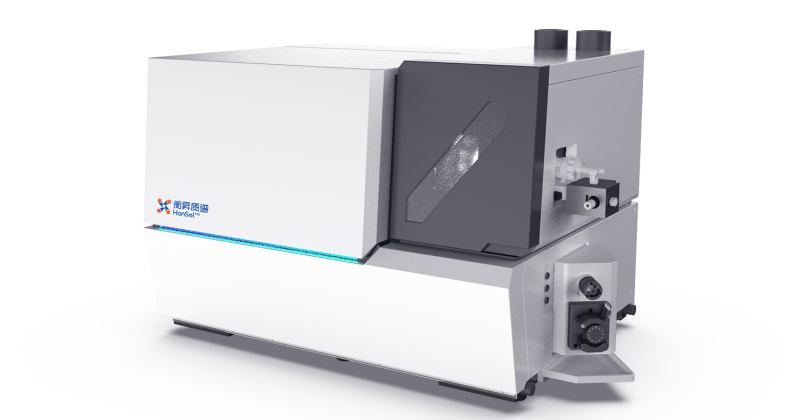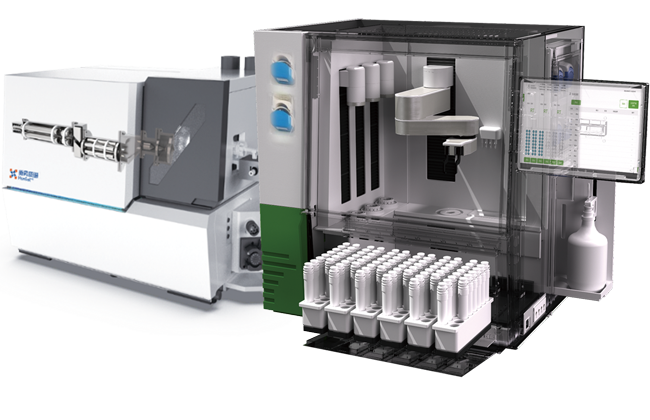Application Preface
Laser Ablation Inductively Coupled Plasma Mass Spectrometry (LA-ICP-MS) is a high-sensitivity, high-spatial-resolution in-situ micro-area analysis technique for solid samples. This method focuses a high-energy laser beam onto the sample surface to achieve local ablation. The generated tiny particles are then transported by a carrier gas (usually argon or helium) into an inductively coupled plasma for ionization, and finally enter a mass spectrometer for multi-element and isotope detection. Compared with traditional solution nebulization ICP-MS methods, LA-ICP-MS offers unique advantages such as eliminating the need for complex sample dissolution processes, fast analysis speed, minimal sample consumption, and the ability to achieve two-dimensional/three-dimensional spatial distribution imaging. Since its widespread adoption in the 1990s, this technology has demonstrated powerful analytical capabilities across multiple research fields. In geosciences, LA-ICP-MS is used for zircon U-Pb dating, trace element geochemistry analysis, and melt inclusion studies. In materials science, it enables high-resolution analysis of micro-area composition and impurity distribution in alloys, ceramics, and thin-film materials. In biomedicine, it can perform metal element imaging combined with tissue sections for research on tumor metal metabolism, drug distribution visualization, and analysis of abnormal metal distributions in neurological diseases. In forensic science and archaeology, due to its minimal sample damage and high spatial resolution, LA-ICP-MS is used for coating comparison, provenance determination of ancient artifacts, and chronology studies. In recent years, with the development of femtosecond lasers, time-of-flight (TOF) mass spectrometers, isotope ratio monitoring (e.g., MC-ICP-MS), and standardized micro-quantitative methods, the quantitative accuracy and imaging capabilities of LA-ICP-MS have been significantly enhanced. For example, calibration using homogeneous or near-matrix reference materials, introduction of internal standard elements, and hyphenation with techniques like synchrotron radiation X-ray fluorescence (SR-XRF) have gradually addressed issues affecting analytical accuracy, such as matrix effects and differences in ablation behavior. However, LA-ICP-MS also faces challenges. Elemental fractionation effects during sample ablation, the impact of complex matrices on plasma ionization efficiency, and the lack of standard reference materials still limit its quantitative accuracy in certain fields. Nevertheless, with its advantages of speed, sensitivity, minimal damage, and high resolution, LA-ICP-MS is still regarded as an important technical platform for future multi-field micro-area composition analysis and high-throughput imaging, showing broad application prospects in emerging areas such as nanotechnology, disease biomarker detection, and trace pollutant distribution studies.
Conclusions of the Article
Laser Ablation Inductively Coupled Plasma Mass Spectrometry (LA-ICP-MS) combines in-situ laser sampling with the high-sensitivity mass spectrometry detection capabilities of ICP-MS, providing an efficient and non-destructive solution for micro-area quantitative analysis of precious metal elements such as rhodium (Rh). As one of the most sensitive elemental analysis techniques available today, ICP-MS features extremely low detection limits (typically reaching ppt levels), a broad linear dynamic range (spanning over 11 orders of magnitude), and excellent isotope resolution, making it irreplaceable for the accurate determination of trace and ultra-trace elements. In Rh analysis, ICP-MS exhibits strong response intensity and minimal background noise for the 103Rh isotope, providing a foundation of high sensitivity and selectivity for LA-ICP-MS. Thanks to the high ionization efficiency of ICP-MS, even Rh particles released via LA ablation at extremely low concentrations can generate clear and stable signals, enabling effective detection of Rh in solid samples. This method can also be applied to other precious metal elements. In summary, leveraging the exceptional sensitivity, stability, and multi-isotope analysis capabilities of the ICP-MS platform, LA-ICP-MS has become a powerful tool for achieving in-situ high-precision quantification of precious metals like Rh, demonstrating significant application potential in fields such as material characterization, catalyst analysis, and precious metal mineral research.





